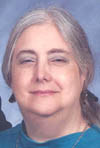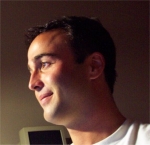There is no doubt that many of us are using cpap machines unnecessarily, because we have positional sleep apnea, but do not know it.
An interesting study has been out for some years -
http://www.medscape.org/viewarticle/514608
and the large print version is below -
Positional Sleep Apnea May Be Common
News Author: Laurie Barclay, MD
CME Author: Désirée Lie, MD, MSEd
CME Released: 10/17/2005; Valid for credit through 10/17/2006
Oct. 17, 2005 — Positional sleep apnea is common and not usually diagnosed on split-night testing, according to the results of a retrospective chart review published in the October issue of Chest.
"Body position during sleep influences the frequency of apneas and hypopneas in 50 to 60% of individuals with obstructive sleep apnea (OSA)," write M. Jeffery Mador, MD, from the State University of New York at Buffalo and the Veterans Affairs Western New York Healthcare System (VAWNY), and colleagues. "Various estimates indicate that positional therapy alone could be used to treat approximately 30 to 50% of all patients with OSA."
The primary objective of this study was to determine the prevalence of positional OSA, defined as a total apnea-hypopnea index (AHI) greater than 5, with a greater than 50% reduction in the AHI between the supine and nonsupine postures, and an AHI that normalizes (AHI less than 5) in the nonsupine posture. The secondary objective was to determine if positional sleep apnea could be accurately diagnosed during a split-night study.
The investigators reviewed records of 326 patients, including 57 patients who underwent a split-night study and 242 patients who underwent polysomnography.
Positional sleep apnea was diagnosed in 49 (49.5%) of 99 patients with mild sleep apnea (AHI, 5 - 15/hour), 14 (19.4%) of 72 patients with moderate sleep apnea (AHI, 15 - 30/hour), and 5 (6.5%) of 77 patients with severe sleep apnea (AHI greater than 30/hour). Sleep time did not exceed 15 minutes in both postures in 104 (38.7%) of 269 patients at the VAWNY and in 80 (33.1%) of 242 overnight studies at the Associated Sleep Center nor in 47 (82.5%) of 57 split-night studies. The percentage of studies with insufficient sleep time in both postures was greater for split-night studies ( P < .0001).
"Positional sleep apnea is common particularly in patients with milder disease who have smaller neck circumferences," the authors write. "Positional therapy has the potential to be an effective therapy in a significant proportion of patients with sleep apnea. Rigorous outcome studies evaluating the efficacy of this treatment modality are urgently needed in patients with mild-to-moderate sleep apnea."
Chest. 2005;128:2130-2137
Extremely important is the statement that
Positional sleep apnea was diagnosed in 49 (49.5%) of 99 patients with mild sleep apnea (AHI, 5 - 15/hour), 14 (19.4%) of 72 patients with moderate sleep apnea (AHI, 15 - 30/hour), and 5 (6.5%) of 77 patients with severe sleep apnea (AHI greater than 30/hour).
Experimentation with an oximeter and different sleep positions is the way to find out, and then get confirmation by a sleep study. Sleeping on your side, with no back sleeping, is probably the the most likely position to avoid sleep apnea for those who do have positional sleep apnea, but it always needs individual experimentation.
The fact that this study, and other information about positional sleep apnea, tends to be ignored by the mainstream sleep disorder professionals, and also by many who have OSA, , only reinforces the truism that we have to be self-affirmative in getting the best treatment for ourselves, and sometimes have to go against current majority opinion.
My own positional sleep study is now set for the 6th October 2011, having been delayed because of other serious health problems. I use a back wedge and a thigh wedge to keep me on my side.
cheers
Mars
















